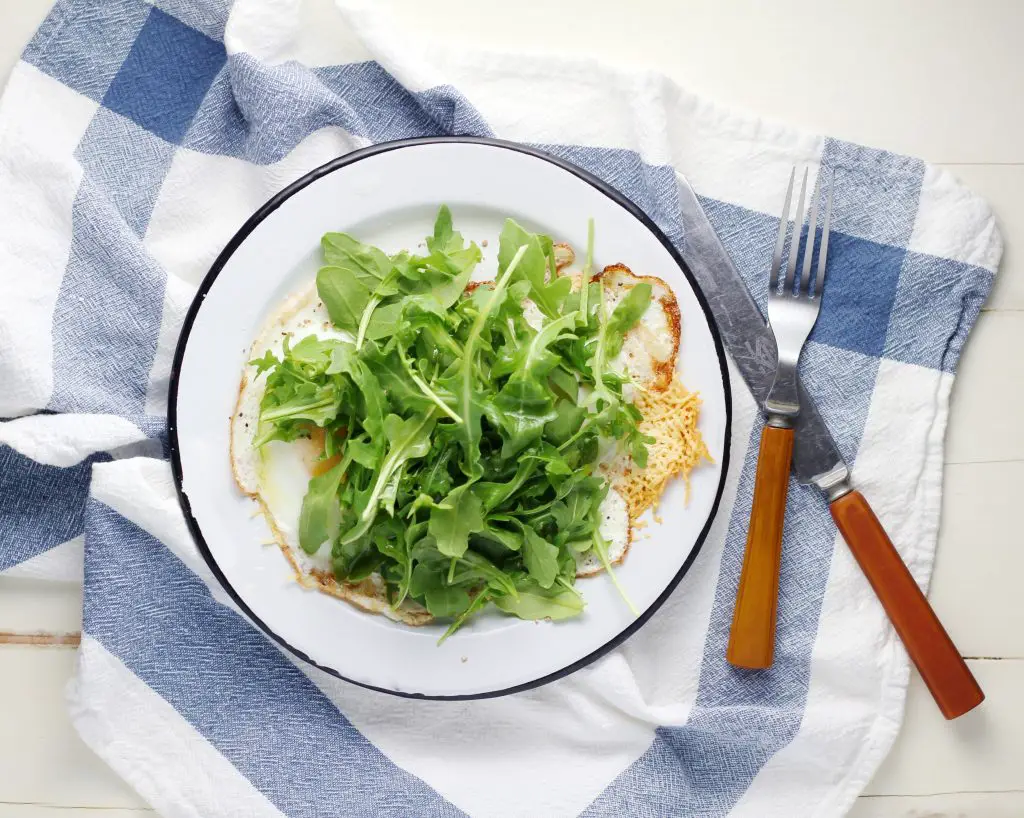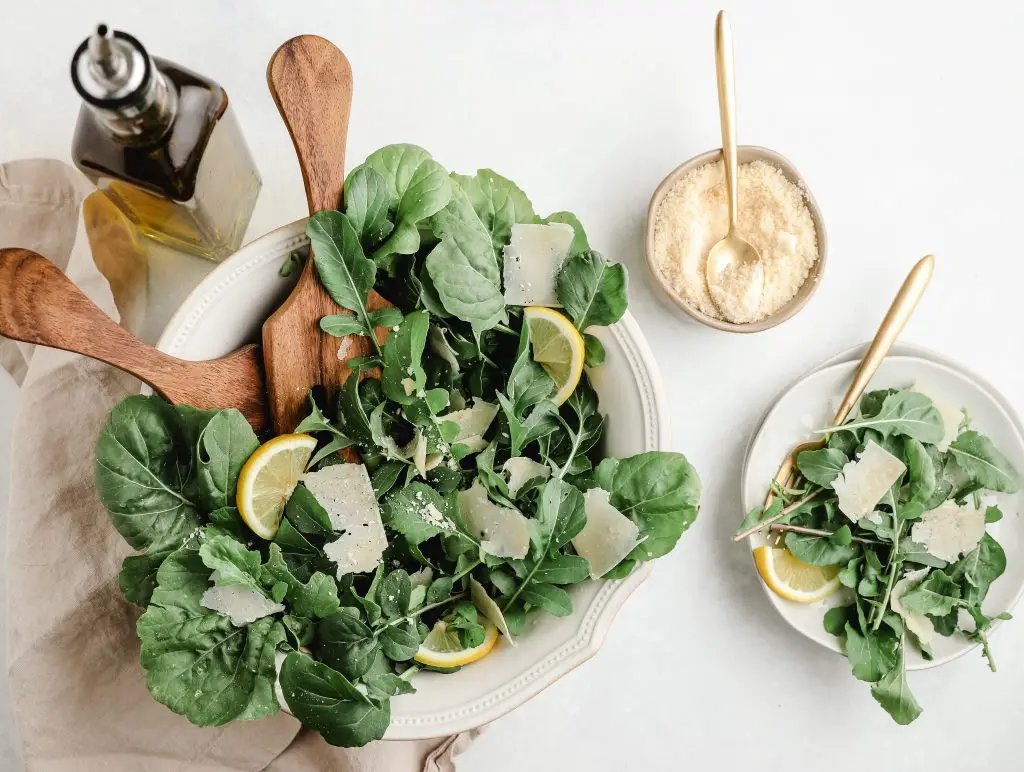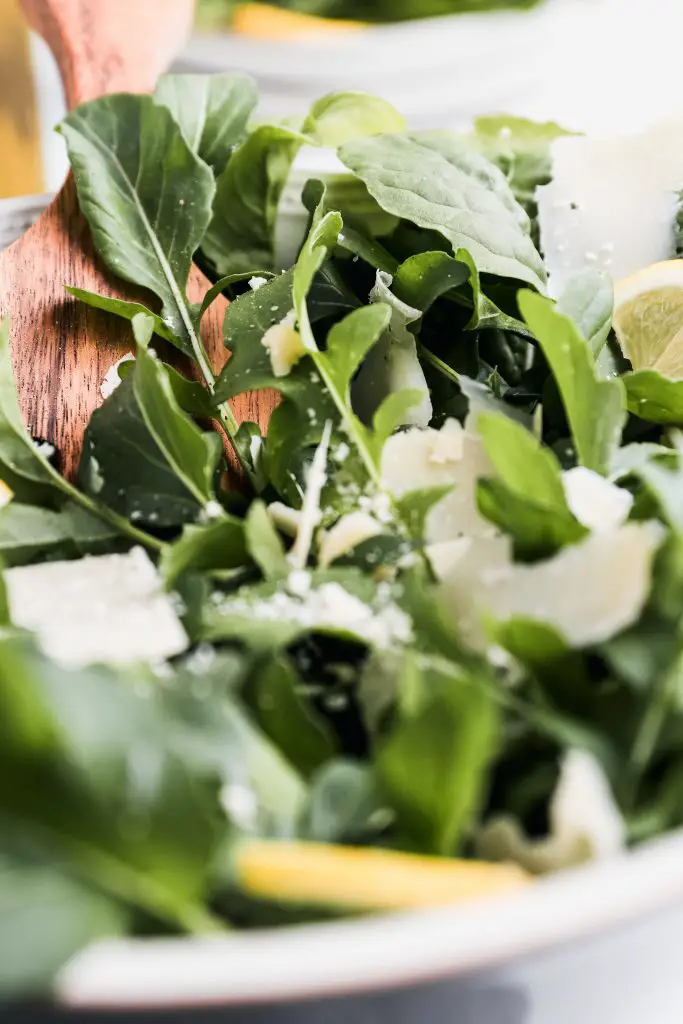How Much Does An Arugula Plant Yield? Arugula, which is also commonly known rocket, is a popular green plant that is typically grown in the cooler months of the year as it has a tendency to bolt extremely quickly in hot weather. However, if you are planting this type of leafy green in the garden how much can you realistically expect to get from a plant?
Arugula plants typically yield approximately 0.5oz (15 grams) per harvest and in most cases you can get 2 to 3 harvests per plant according to studies by University of Agricultural Sciences and Veterinary Medicine in Romania. However, as most people tend to plants arugula in rows or patches it is better to think of it in terms of yield per area. In those circumstances, we typically see yields of 18oz per square ft (5 to 6 kg per square metre), however, this assumes that the plant is harvested 3 times.
For the typical home gardener what we would highly recommend is that you so a row of rocket at the end of summer and then another lot just a few weeks later as this will enable you to have a continuous supply for a few months.
If you live in a relatively mild climate sowings can continue through autumn as this will ensure that the leaves are available throughout the winter. However, as it is a relatively fast-growing crop it is highly recommended that you harvest the plants for a few weeks and then rip the plants up allowing space for other things to be grown.

How To Grow Arugula
Arugula is a member of the brassica family and is not actually related to common lettuce varieties such as iceberg and romaine. As a result of this lineage, Arugula is a relatively hardy plant that can survive in relatively cold conditions.
To get the plant started you can either so the seed directly into the garden or into a seed tray. We generally recommend that you sow seeds into a tray, particularly, when planting in late summer because at that time of year there will be many other crops occupying your garden space.
Sowing into a seat tray will help to get the plants started while waiting for garden space to become available. If you were planning in a seed tray it is best to use a good quality seed raising mix and plant 2 to 3 seeds per cell to ensure that every cell is occupied with at least one plant.
The seeds should be sown at a depth of approximately half an inch and then the seed tray should be watered regularly to ensure that the soil remains moist. In most cases, germination will take approximately 7 to 14 days and the plant will typically need to spend 4 to 6 weeks in the seed tray before it is ready to be planted out into the garden.
When planting out into the garden the area that you choose will directly depend upon the nature of the climate that you live in. As arugula is a leafy green it does not necessarily need to be planted in full sun, it can tolerate part or even full shade and still produce a crop. The advantage of planting in shaded areas when the weather is still relatively warm is that it will slow down the rate of growth and reduce the chances of the plant bolting.

However, if the weather is starting to cool rapidly than you may consider planting it into a full sun location to ensure that the speed of growth is maintained. I personally often hedge my bets and plant half of my crop in shade and the other half in the sun as this spreads the period over which the leaves are available to be harvested, however, how you do it is entirely up to you.
In terms of soil conditions it is ideal to have rich moist and free-draining soil that contains plenty of nutrients to ensure the plant has everything that it needs. To ensure this is the case it is a good idea to dig in a bag of compost prior to planting the seedlings to ensure they get off to the best possible start.
The other key consideration when planting leafy greens whether they are arugula or something else is providing protection against slugs and snails as they have been known to wipe out an entire crop overnight.
To avoid this problem we generally use snail pellets as they are quite effective in stopping the plants from being eaten. However, the other option is to use physical barriers such as cloches which will prevent the snails from getting in and eating the plants as well.
Cloches can be made from things like old milk cartons with the bottoms cut off and the lids removed. The only problem with using cloches is that the plants can get too hot which can lead to them running to seed, as such we recommend that this method is used when the plant is in shade or in the cooler parts of the season where it is less likely to overheat.

Harvesting Arugula
To maximize the output of the plant it is best to pick the outer leaves from the plant leaving the inner leaves to continue to grow and ensuring that the plant recovers more rapidly. If you use this method it is common to be able to return to the same plant and get a second harvest after only 2 weeks or so which sometimes allows additional harvests to be completed for the plant is no longer useful.
As mentioned earlier in the article arugula is known to run to see relatively easily which means that it is best to harvest the leaves frequently as this will encourage the plant to continue to produce leaves rather than attempt to run to seed.
Additionally, if you can also avoid stress on the plant this will also extend its life which can mean shading the plant in hot weather and also watering regularly to ensure that it does not dry out.
I hope that you found this article useful and have great success with your arugula if you have any additional questions or comments please leave them in the section below.
Relevant Articles
Can You Plant Into Mulch? Is It Possible?
How Many Cauliflowers Do You Get From One Plant?
How Many Pumpkins Are Produced Per Plant? And How Big Are They?
How Many Times Can You Harvest Lettuce? (It’s More Than You Think)
